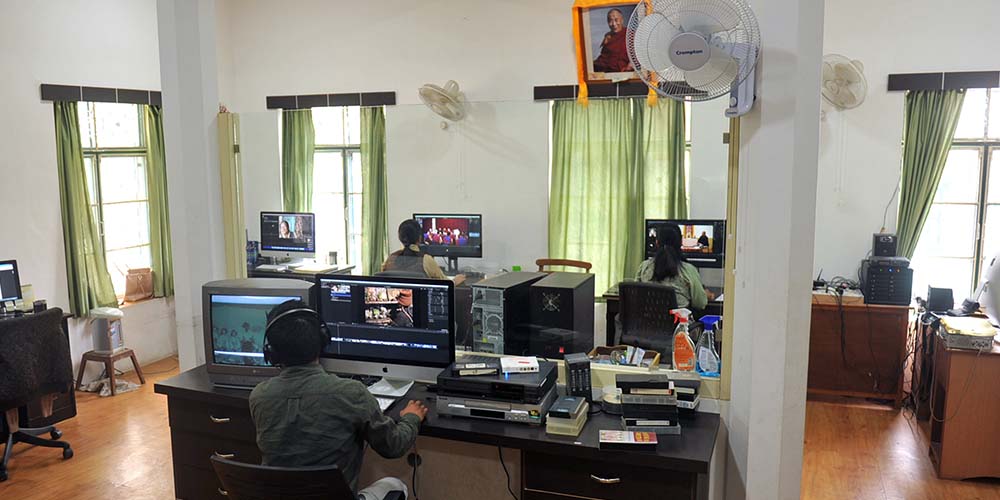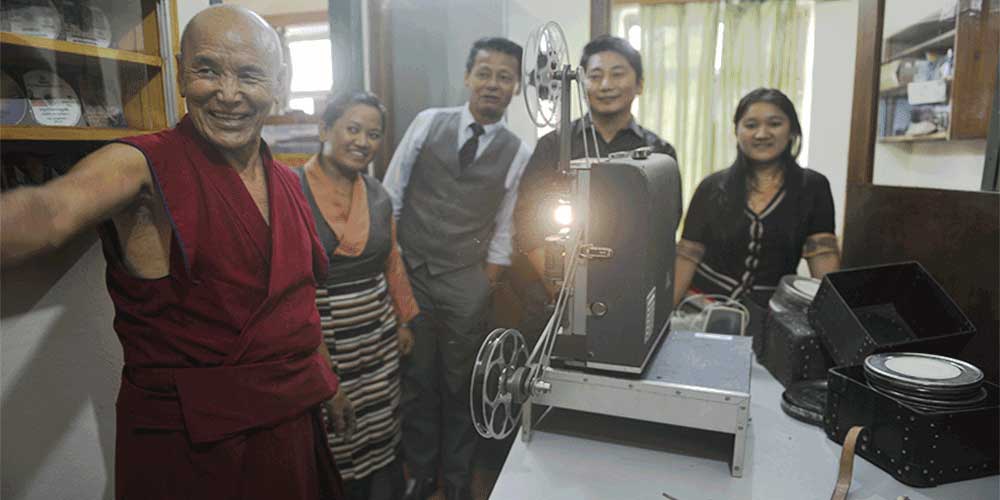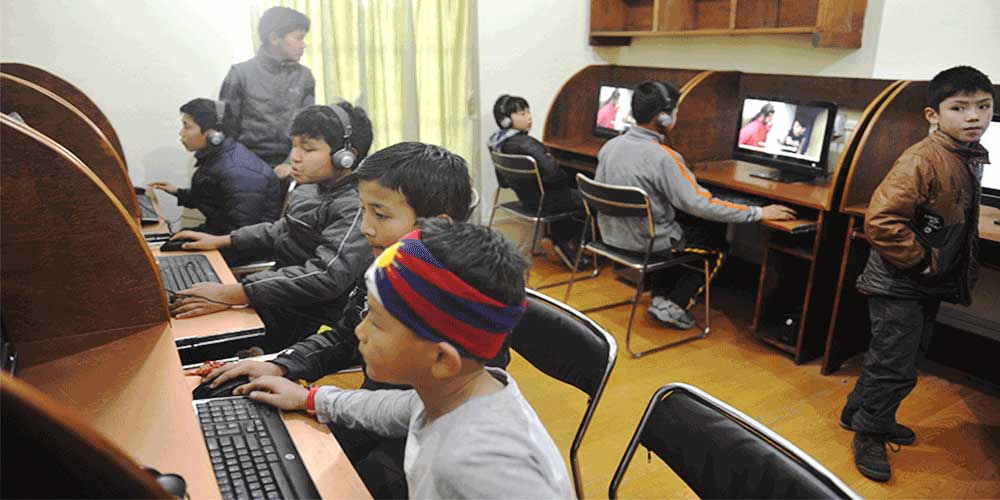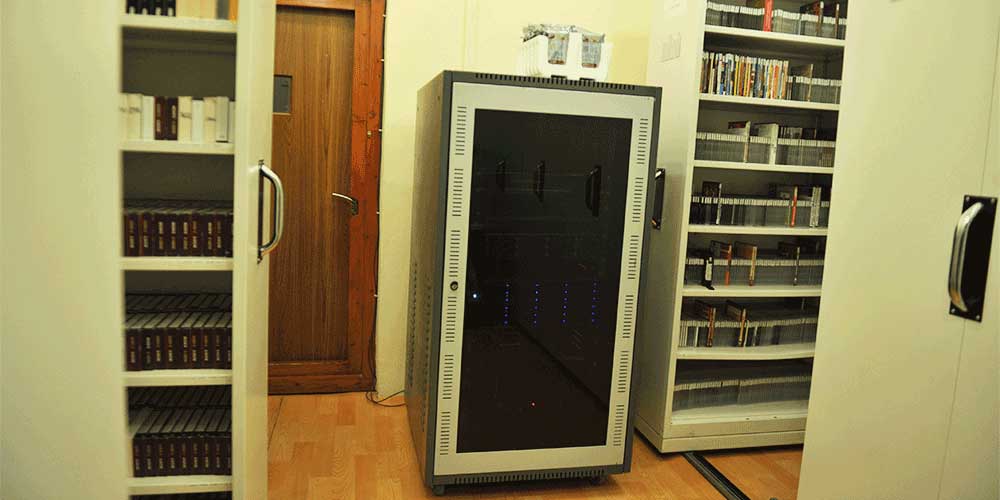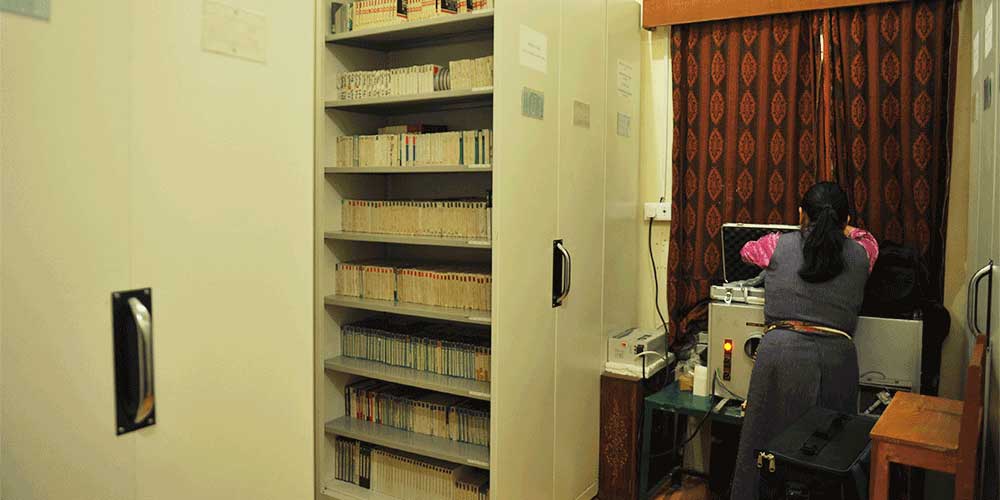The Audio-visual Archive (AVA)
The Audio-visual Archive (AVA) was created in 1976 as a dedicated department within the LTWA with the objective of accumulating, documenting, and preserving audio and visual resources pertaining to Tibet and Tibetan-related issues to prevent their loss. Since then it has consistently expanded its collections and services, now boasting one of the most extensive audio and visual resources related to Tibetan studies in the diaspora. These resources are meticulously safeguarded and preserved for posterity while also being shared to global audiences through various mediums.
Today, AVA holds more than 53,000 hours of records which are stored in an enhanced storage system that has a capacity of 600 terabytes, primarily consisting of oral histories. The collection includes accounts from former Tibetan government officials, army veterans, craftsmen, doctors, astrologers, traders, farmers, artists, and senior monks. A substantial portion of the archives pertains to the teachings of His Holiness the 14th Dalai Lama and other prominent Buddhist masters. Additionally, the collection features recordings of scholars’ talks, proceedings of workshops, conferences, and seminars, as well as a diverse array of documentary films, news, songs, music, language, science, and Buddhist studies.
The resources are available in various formats, ranging from analogue to high-quality digital construction. While the majority of the collections are in analogue form, a significant portion has been digitized, archived, and catalogued for convenient access.
In an effort to preserve the collections, the resources are stored in a climate-controlled chamber where temperature and humidity are carefully regulated to prevent any negative effects from external elements. This is crucial for ensuring the safety and security of the resources.
Since 2013, the storage system has been upgraded to accommodate the growing addition of materials. Additionally, copies of editions of the resources have been backed up and retained in an LTO tape cartridge, a high-performance data storage system. This measure ensures further safeguards of the valuable resources.

Photographic Archive
The photographic archive started off as Tibetan Architecture Documentation Centre (TADC). It was formed in 1991 as a part of the Library of Tibetan Works and Archives (LTWA), to document the precarious tradition and act as a data bank for future research and constructions. But with the growing number of donation of pictures, slides and films, which includes both architectural and non architectural pictures, it shifted from being the Tibetan Architecture Documentation Centre to the Photographic Archive. It now collects, digitize and store growing library of color and black and white photos, slides, and films of both architectural and non architectural specially those which are pre-1959, rare, or in private collections, as well as modern, in exile pictures.
The primary objective of the photo archive, under the Audio Visual department is to collect and preserve the photographic representations of historical insights of Tibet and its people. Tibet has for centuries been a mystery and fascination for the world outside because of its ‘forbidden country’ tag making the photos of Tibet and Tibetans extremely rare and unique. Thus, the Photo Archive, preserve and archive these visuals and make them available to anyone interested in Tibetan studies and contemporary Tibetan civilization.
The collections primarily include donations received from various individuals and institutions and photos taken by the Archive in India and Nepal. The present collections contain approximately over 10,139 hard copies, 1,16,165 soft copies, 500 slides and around 2,523 films including both positives and negatives.
The Archive is open to anyone interested to view the contemporary Tibetan civilization captured on lens. Loans of digital copies of photographs are also available to scholars, researchers, students and the general public subject to the formal agreement of terms and conditions set by the Archive.
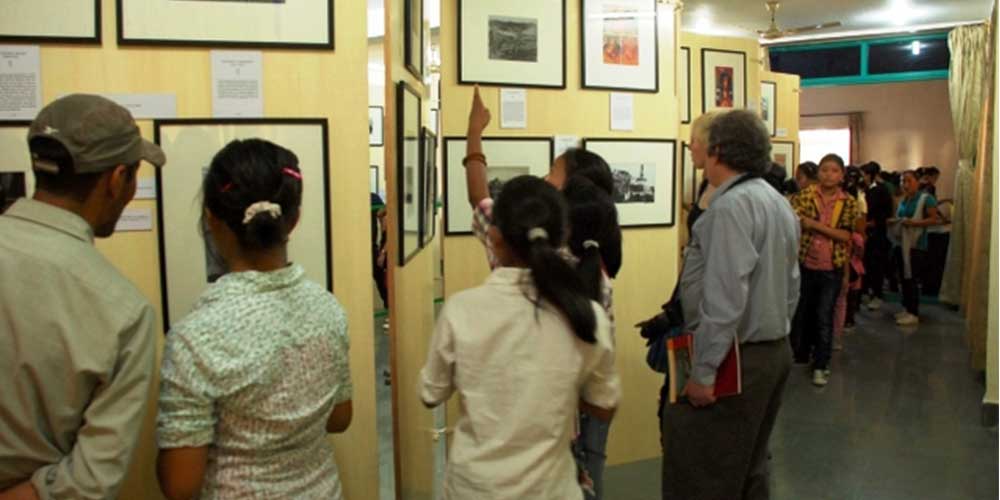
Multi-Media Library
Since 2012 most of the audio-visual resources stored in archive have been made accessible to public. A dedicated multi-media library equipped with adequate facilities for listening and viewing various resources on Tibetan and Buddhist studies was created to cater to the needs of growing audience. The resources primarily include speeches and discourses of His Holiness the Dalai Lama and other eminent lamas, Tibetan history and culture, language and literature, Buddhist philosophy, Tibetan movies and documentary films, audio and video songs, etc. Beneficiaries include tourist, researchers, monks and students.
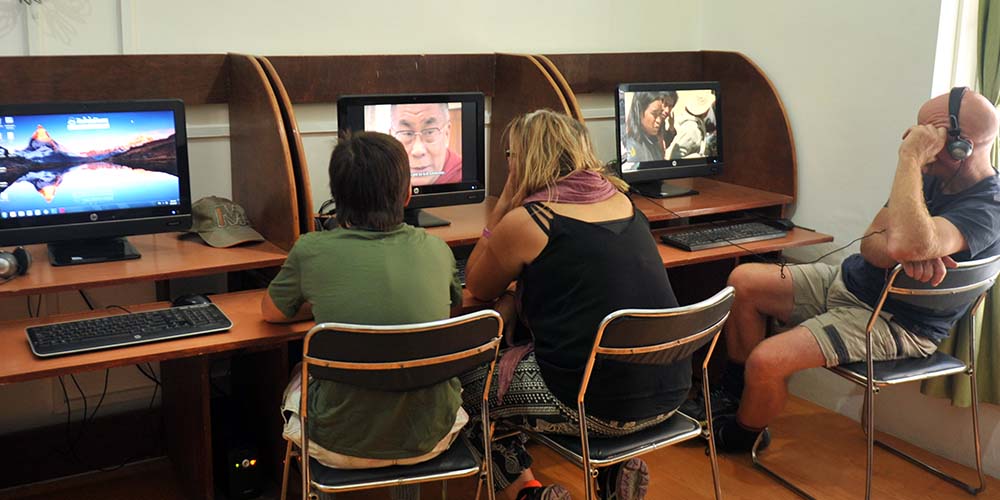
Department Members
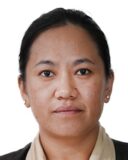

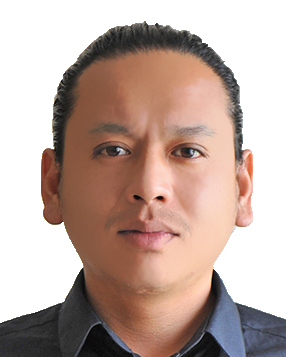
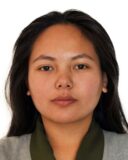


 Library of Tibetan Works and Archives
Library of Tibetan Works and Archives
